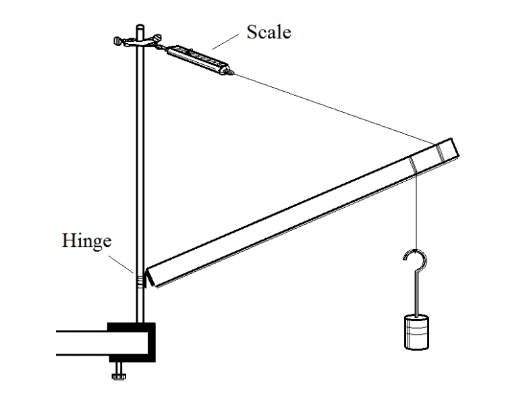Measure a tension in static equilibrium

Figure courtesy of
SoPA's UP I Physics Activities Manual
Your goal is to compare the actual tension in a cord
to the theoretical tension derived from the conditions
of static equilibrium.
- Choose a meter stick and weigh it. Record the mass.
- Check your scale by hanging a known mass from it.
Note the reading, and determine if you need to multiply
the reading by a "calibration factor" in order to
get the proper value.
- Construct a "physics crane," as shown in the diagram above.
- Cut a piece of cardboard and fold it in two to create the "hinge"
to hold the meterstick in place. Tape the hinge to the aluminum rod.
- Make sure that the meter stick is not horizontal, but tilts upward
- Attach the support cable near the end of the meterstick
- Hang the weight from a different location, at least 10 cm from the end
of the meterstick.
- Hang enough mass to cause the scale to read 10-15 Newtons
- Write down the actual tension in the support cable. Estimate an
uncertainty, based on your experience with the scale.
- Measure the angles you will need in order to compute
the torques around the hinge.
- Using your measurements, compute the theoretical tension in the
support cable.
- Compare the theoretical value to the actual reading from the scale
(after applying any calibration factor which is necessary).
Estimate an uncertainty, based on the the uncertainties
of other quantities you have measured.
- Do the two tensions agree within their uncertainties?
Please create a short report in which you write down
all your measurements and calculations NEATLY.
Include any diagrams you used in the course of calculations.
Discuss briefly the actual and theoretical tensions,
and whether they agree within the uncertainties.

